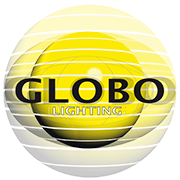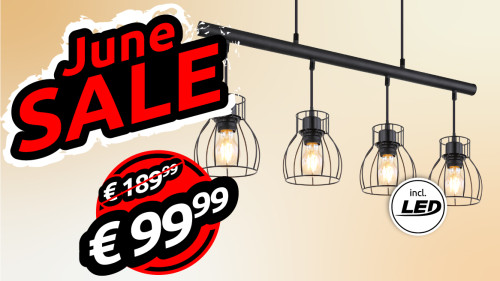BATHROOM LIGHT
WHAT IS IMPORTANT WHEN IT COMES TO BATHROOM LIGHTING?
Today, the bathroom is no longer a purely functional room, but an oasis of well-being that allows you to switch off from everyday life and has to meet various requirements. This is often referred to as a home spa - a wellness oasis for the home. It is important to have coordinated and suitable lighting that corresponds to the various tasks of the bathroom:
- Style and design
- Ambience and atmosphere
- Safety
- Functionality
In this guide, we describe what is important when choosing the right bathroom lamps.
THREE TYPES OF LIGHTING IN THE BATHROOM
Various light sources ensure optimal lighting in the bathroom, each of which performs different tasks. Bathroom ceiling lights, recessed lights or bathroom lights on the wall, for example, provide the right basic lighting, while lights on the mirror or in other functional areas provide illumination of details.
BASIC LIGHTING
The most important source of light in the bathroom is the basic lighting. It is mainly used for orientation. Ceiling lights, spotlights or recessed spotlights that can be integrated into the suspended ceiling are usually used for this purpose.
LED panels or wall lights are also very suitable for basic lighting in the bathroom. Because these lamps are almost always switched on when the bathroom is in use, particularly energy-efficient bulbs such as LEDs should be used here.
FUNCTIONAL LIGHTING / TASK LIGHTING
The right lighting for shaving, make-up, brushing teeth as well as for showering or bathing is provided, for example, by mirror lights or furniture lamps. They ensure that even small details are clearly visible, making daily body care a pleasure. The light should be bright enough, but without dazzling.
ACCENT LIGHTING AND INDIRECT LIGHTING
Accent lighting and indirect lighting play an important role in the ambience in the bathroom. Under-cabinet luminaires, for example in the form of LEDs such as the Villy model, create a pleasant and cosy light.
THE PROTECTIVE AREAS IN THE BATHROOM: THE RIGHT LAMP FOR EVERY AREA
Depending on the area in the bathroom, a bathroom lamp must be adequately protected against water. How good this protection is is expressed by the IP protection class. The first digit stands for protection against dirt and solids and the second digit for protection against water or moisture. For bathroom lamps, the second digit is the most important.
The IP protection classes after the second digit (protection against water and moisture) are listed below:
- IPx0: No protection against water
- IPx1: Protection against water droplets from above
- IPx2: Protection against water droplets falling at an angle (15 degrees)
- IPx3: Protection against spray water up to 60 degrees angle of incidence
- IPx4: Protection against spray water
- IPx5: Protection against water jets
- IPx6: Protection against water penetration during short flooding
- IPx7: Protection against water ingress through short-term immersion
- IPx8: Protection against water ingress through constant immersion
- IPx9: Protection against water ingress from any direction as well as protection against water with high pressure up to 100 bar
The degree of protection required for a bathroom lamp depends on the place where the bathroom lamp is installed. For this purpose, the bathroom is divided into various protective areas, which are defined in DIN VDE 0100 Part 701:
- Protection zone 0: This is the area inside the shower or bathtub. At least the IP protection class IPx7 is required here. In addition, only lamps with a voltage of up to 12 volts AC may be used.
- Protection area 1: This is the area up to 2.25 m above the shower or bathtub. Only lamps with a protection class of at least IPx5 may be used here. Here, too, the voltage may be a maximum of 26 V with alternating voltage.
- Protection area 2: This area is 60 cm around protection area 1. Only luminaires with a protection class of at least IPx4 are permitted here.
HOW MANY LUMENS DO I NEED IN THE BATHROOM?
Even if individual requirements and preferences vary, lighting designers recommend around 300 lumens per square metre in the bathroom for basic lighting. However, there are various criteria that make a higher or lower value seem reasonable:
- Are there windows through which daylight enters the bathroom?
- Colour of the tiles (light / dark)
- Furnishing
- Colour of washbasin and bath and shower tray
FIND THE RIGHT LAMPS FOR THE BATHROOM AT GLOBO LIGHTING
In our assortment you will find bathroom lights and lamps to suit every taste. To make it easier for you to choose, you can filter and sort the results according to various criteria, such as features or price.
If you have any questions about an item in the range, please do not hesitate to contact us by phone. You can find our telephone number and service hours on our contact page.






































Newsletter
Contact
Contact us